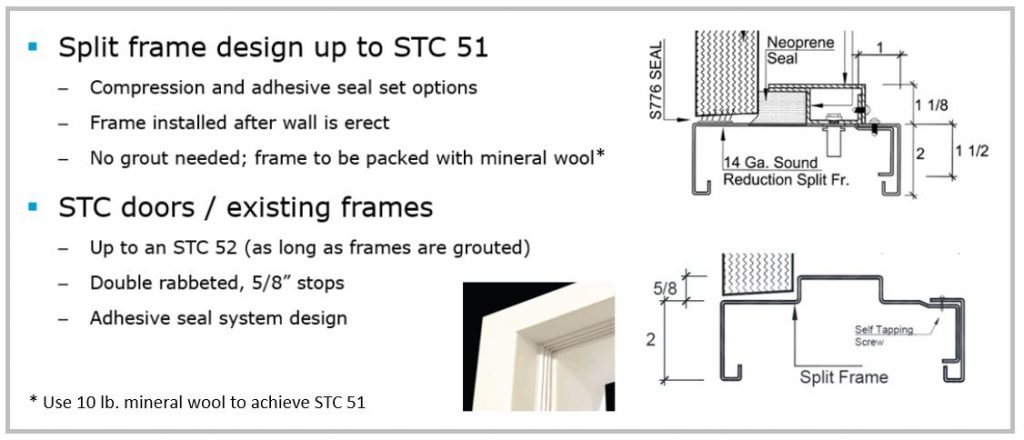Benefits of Sound Abatement Go Beyond the Obvious
When there’s effective sound control in hospitals, schools, office buildings, theaters, court houses, hotels, and other public buildings, it makes being in the building more pleasant and productive. Common sound control applications include government buildings where confidentiality is required, schools to help students focus or keep noisy band practice isolated, healthcare facilities for patient privacy, hospitality settings such as guest rooms, meeting rooms & entertainment venues, offices to keep meetings or phone calls discreet, and more.
Common Realizations at STC Levels
The primary factor building owners and architects consider when designing, building, and retrofitting a space is a building partition’s Sound Transmission Class (STC). This integer rating is widely used to rate interior partitions, ceilings and floors, doors, windows and exterior wall configurations. STC levels are defined as follows:
- STC 25 – Normal speech can be understood quite easily and distinctly through wall
- STC 30 – Loud speech can be understood fairly well, normal speech heard but not understood
- STC 35 – Loud speech audible but not intelligible
- STC 40 – Onset of “privacy”
- STC 42 – Loud speech audible as a murmur
- STC 45 – Loud speech not audible; 90% of statistical population not annoyed
- STC 50 – Very loud sounds such as musical instruments or a stereo can be faintly heard; 99% of population not annoyed
Sustainability Incentives
Did you know there’s another compelling reason to consider sound control when designing or retrofitting a building? Sound abatement can contribute to sustainability goals! For example, in schools Indoor Environmental Quality (IEQ) Enhanced Acoustical Performance gives credit when classrooms and schools meet specific STC requirements of ANSI Standard S12.60-2002.
See How Sound Attenuation Contributes to Sustainability Goals.
Overall, there are many STC rated new door assemblies that can help buildings gain LEED credits. Examples include Green Circle Certified products from Ceco Door and Curries. In addition, retrofit STC options include using split frame designs or STC doors with existing frames, as shown here:

Other building partitions that also play a critical role in achieving the desired level of sound control while meeting sustainability goals include wall material, insulation, furniture, ceiling height, flooring, windows, and daylighting. One commonly used material is glass, which when it consists of two panes with the correct amount of airspace between them, can provide proper sound control along with energy efficiency.
People usually don’t realize it when they’re in a facility that has good sound abatement, but they sure notice it when a facility is lacking acoustic control! See Are All Sound Ratings Equal? to get a better understanding of sound rated door assemblies. For more information on door assemblies for all levels of sound control needs, see acoustical door assembly information from Ceco Door, Curries, and Fleming.
ASSA ABLOY Academy offers Understanding Acoustic Doors and Frames, a 15-minute introductory course that’ll help you understand how Sound Transmission Class (STC) ratings are figured, how they differ from other sound ratings, and what components impact these ratings.
No comments yet - you can be the first!